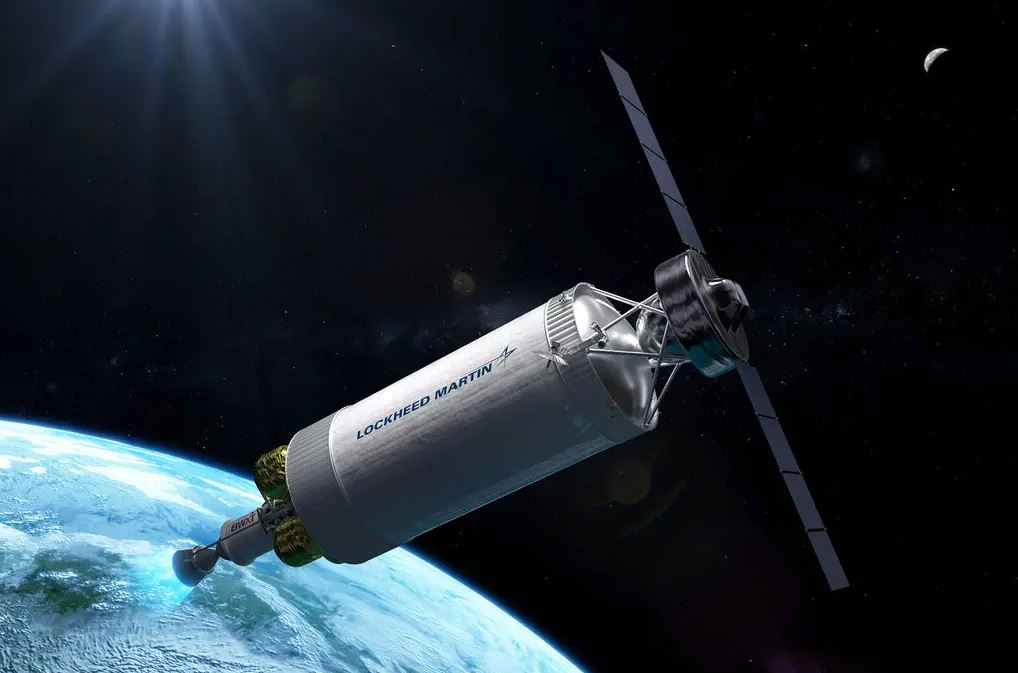It is possible that NASA may begin nuclear rocket testing in orbit in less than three years.
On Wednesday, the National Aeronautics and Space Administration (NASA) and the Defence Advanced Research Projects Agency (DARPA) made the announcement that Lockheed Martin had been chosen to develop, manufacture, and test a propulsion system that may one day let people travel more quickly to Mars.
The nuclear fission reactor that serves as the engine’s core will be constructed by BWX Technologies, which has its headquarters in Lynchburg, Virginia.
DRACO is an abbreviation for the Demonstration Rocket for Agile Cislunar Operations, which is the full name of the programme that costs 499 million dollars.
Mars and Earth go near enough to one another around once every 26 months for a shorter travel to be possible between the two planets. But even if everything goes well, the journey might take anywhere from seven to nine months to complete. The most of the time, the spaceship is basically going with the flow as it travels through space.
However, if the spaceship could continue to speed up over the first half of the mission and then begin to decelerate once again, the amount of time required for the trip may be significantly reduced. There is not enough room in the spaceship to carry that much propellant, and the current rocket engines, which normally depend on the combustion of a fuel like hydrogen or methane with oxygen, are not efficient enough to complete this task.
Nuclear processes, on the other hand, which produce energy by splitting the atoms of uranium, are far more effective.
The DRACO engine would be comprised of a nuclear reactor that would heat hydrogen to temperatures ranging from a frigid minus 420 degrees Fahrenheit to a warm 4,400 degrees, with the hot gas being expelled through a nozzle to create propulsion. A more efficient use of fuel would make it possible to go to Mars more quickly, cutting down on the length of time humans have to spend in the hazardous environment of deep space.
The Department of Defence Advanced Research Projects Agency (DARPA) recognises the potential use of nuclear propulsion in applications that are more relevant to the United States. This technique may make it possible for military satellites in orbit around the Earth to perform fast manoeuvres.
The concept of using nuclear power to propel spacecraft is not brand new. Project Orion, which was funded by NASA, the Air Force, and the Advanced Research Projects Agency (ARPA), considered the possibility of harnessing the explosions caused by atomic bombs in order to speed up spaceships during the 1950s and 1960s.
At the same time, NASA and other organisations also began working on Project Rover and Project NERVA, which were endeavours with the goal of developing nuclear-thermal engines conceptually comparable to those that are now being pursued by the DRACO programme. A total of 23 reactors were constructed and put through their paces in the testing phase, but none of them were ever sent into space. Prior to the conclusion of this programme in 1973, NASA had considered the possibility of using nuclear reactors as a means of powering a lunar colony and sending space probes to Jupiter, Saturn, and even farther into the solar system.
The use of uranium of weapons-grade purity in NERVA’s reactors, as opposed to a less highly enriched version of the element in DRACO’s reactors, is one of the most significant distinctions between NERVA and DRACO.
As part of the safety measures to reduce the likelihood of a nuclear incident occurring on Earth, the reactor would not be activated until the spacecraft had left Earth’s atmosphere.
The nuclear-thermal engine is going to be put through its paces during a flying test as part of the DRACO programme. A vice president at Lockheed Martin named Kirk Shireman said that the launch was presently planned to occur in the late 2025 or early 2026 time frame.
According to Dr. Dodson, the orbit of the demonstration spacecraft would most likely take place at an altitude ranging from 435 to 1,240 miles. According to her, this is a level that is high enough to guarantee that it will remain in orbit for more than 300 years, which is the amount of time necessary for radioactive components in the reactor fuel to degrade to safe levels.

